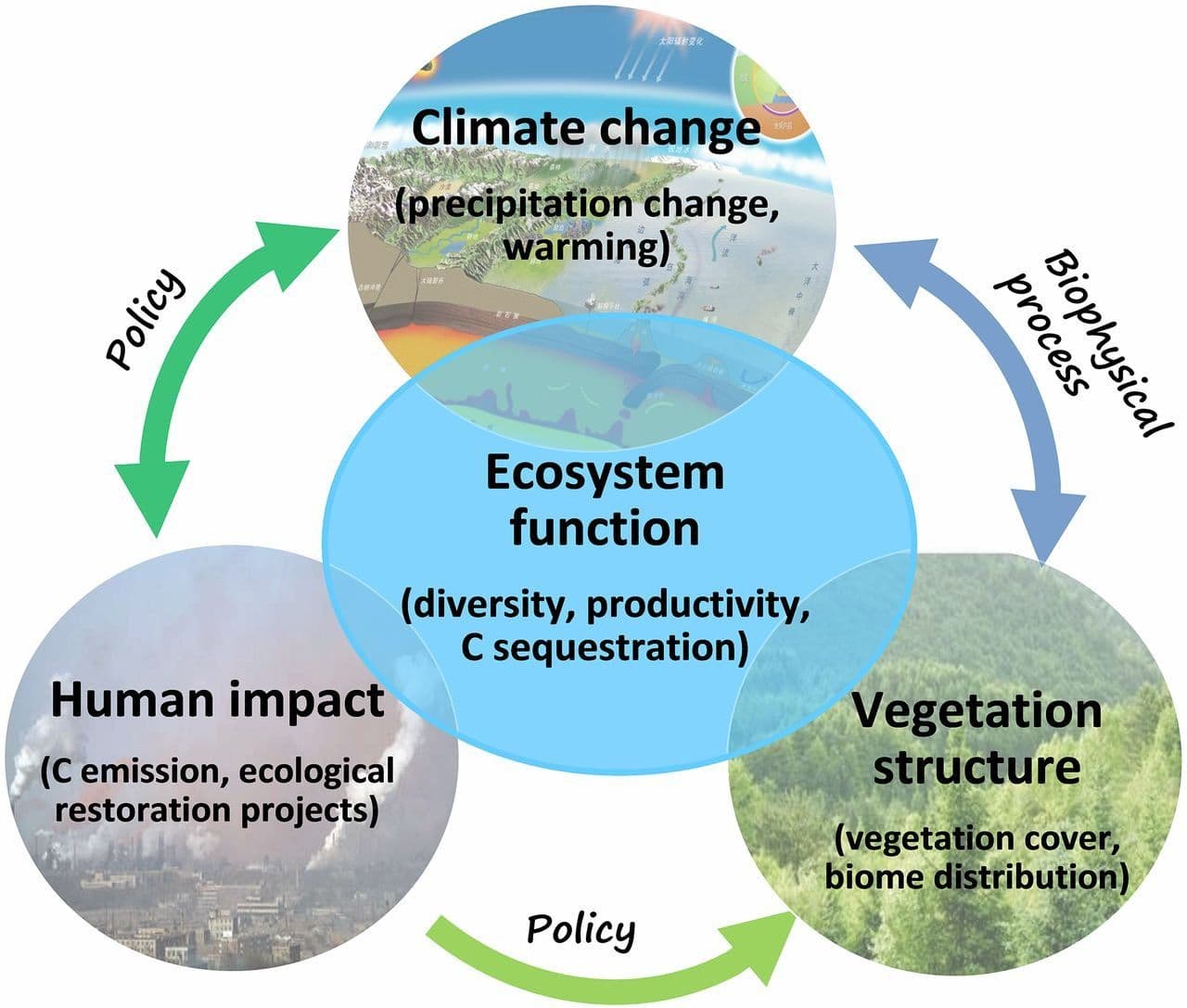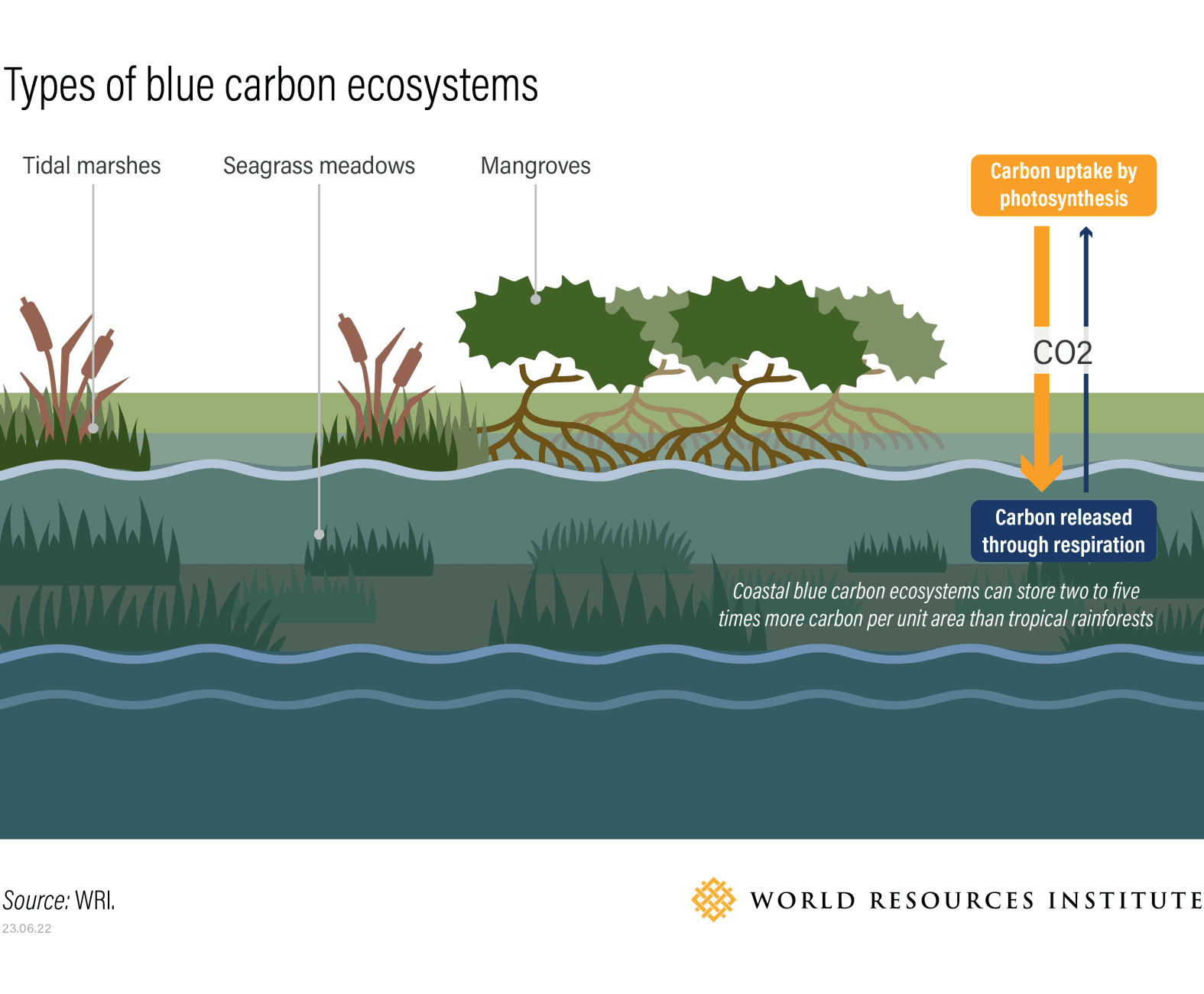"Carbon: From Elemental Basics to Blue Carbon Ecosystems and Climate Change Mitigation"
Introduction:

Carbon is an element that takes the form of a solid graphite or diamond. Carbon is one of the basic elements of all living things.
Carbon is considered the most important element, it is the second most abundant element in the human body after oxygen. Carbon paper was an early method of making copies, using paper coated with wax and originally carbon black. A carbon copy is a copy made by placing a blank page under carbon paper and writing or typing on it. The Latin root of carbon is carbonem, or "charcoal."
A process that safely separates and stores harmful substances is called sequestration.
Carbon Sequestration:
Carbon sequestration or carbon dioxide removal is the long-term removal, capture, or sequestration of carbon dioxide from the atmosphere in order to slow or reverse atmospheric CO2 pollution and to reduce or reverse global warming .
Impacts of Carbon Sequestration:

• About 25% of the carbon we emit has historically been captured by the earth's forests, farms, and grasslands. Scientists and land managers strive to keep landscapes vegetated and soils hydrated so plants can grow and store carbon.
• Up to 30% of the carbon dioxide emitted when burning fossil fuels is absorbed by the upper ocean layers. However, this increases the acidity of the water, and ocean acidification makes it harder for marine animals to build shells. Scientists and the fishing industry are monitoring changes due to carbon sequestration and taking active steps to adjust fishing practices.
Visit this website to dive deeper with Catch Foundation and know more about the environment.
Blue Carbon:
Coastal ecosystems such as mangroves, tidal flats, and seagrass meadows contribute to climate change along coastlines around the world, including protection from storms and sea level rise, prevention of coastal erosion, regulating coastal water quality, and providing habitat for commercial species. We offer a number of essential benefits and services to help you adapt. important fisheries and endangered marine species, and the food security of many coastal communities. Additionally, these ecosystems sequester and store large amounts of coastal blue carbon from the atmosphere and ocean, and their role in mitigating climate change is now recognized. Despite these benefits and services, coastal blue carbon ecosystems are among the most threatened ecosystems on Earth. An estimated 340,000 to 980,000 hectares are destroyed each year. It is estimated that up to 67%, at least 35%, and 29% of the world's mangroves, tidal flats, and seagrass beds have been lost, respectively. If this trend continues at its current pace, an additional 30 to 40 percent of tidal marshes and seagrass, and nearly all unprotected mangroves, could be lost over the next 100 years. When these ecosystems are damaged or lost, they can become a significant source of the greenhouse gas carbon dioxide.
What is the Blue Carbon Ecosystem?

Mangroves are a type of tropical forest that grow on the border between land and sea and are regularly flooded by tidewater. Mangroves are one of the most carbon-rich forests in the tropics. The average annual carbon sequestration rate of mangroves is estimated to be on average 6-8 Mg CO₂e/ha (tonnes of CO₂ equivalent per hectare).These rates are approximately 2 to 4 times higher than the global rates observed in mature tropical forests.
Mangroves provide at least $1.6 billion in ecosystem services, including: Supports fisheries by providing important spawning grounds for commercial fish species. It filters pollutants and contaminants from coastal waters, contributing to healthy coastal seawater quality. Protect coastal developments and communities from storms, flooding and erosion.
Over the past 50 years, 30-50% of mangrove forests have been lost worldwide, with the rate of loss continuing every two years.The main causes of destruction of mangrove ecosystems include deforestation for the construction of fish ponds and other unsustainable coastal developments.Experts estimate that emissions from mangrove destruction could account for up to 10% of total global emissions from deforestation, even though mangroves make up only 0.7% of tropical forest area.
Why are coastal and marine ecosystems important for climate change mitigation?

Coastal ecosystems such as mangroves, seagrass meadows, and tidal wetlands mitigate climate change by sequestering far more carbon dioxide (CO2) from the atmosphere and ocean per unit area than terrestrial forests. The carbon deposits accumulated in these systems are derived from above-ground plant biomass (tree trunks, stems, leaves), below-ground plant biomass (root systems and rhizomes), and carbon-rich organic matter typical of these ecosystems.
It accumulates in the soil.Carbon is primarily stored underground in the soils of coastal ecosystems. Between 50 and 99 percent of coastal blue carbon stored in mangroves, tidal flats, and seagrass meadows is found in subsurface soils. These rich carbon stores in soil exist up to 6 metres below the earth's surface and remain there for very long periods of time (up to thousands of years).
Where are coastal blue carbon ecosystems found?

Coastal blue carbon ecosystems exist on the coasts of every continent except Antarctica. Mangroves grow in the intertidal zone of tropical and subtropical coasts.Countries with the highest mangrove populations include Indonesia, Australia, Mexico, Brazil, Nigeria, Malaysia, Myanmar, Papua New Guinea, Cuba, India, Bangladesh, and Mozambique.
Tidal wetlands are tidal ecosystems that occur on protected coasts from the subarctic to the tropics, but are most common in temperate zones, primarily in Europe, North America, Australia, and high latitude regions of South America and Africa.
Seagrass meadows are submerged flowering plant communities found in coastal waters of all continents except Antarctica. More than 60 species of seagrass are known to exist, of which up to 10-13 can occur simultaneously in tropical regions. There are currently no regional and global maps of coastal blue carbon hotspots, although several countries are working to better map and quantify these systems.
If you are curious to know about the brands that are working for sustainability, you can visit Mission Sustainability
